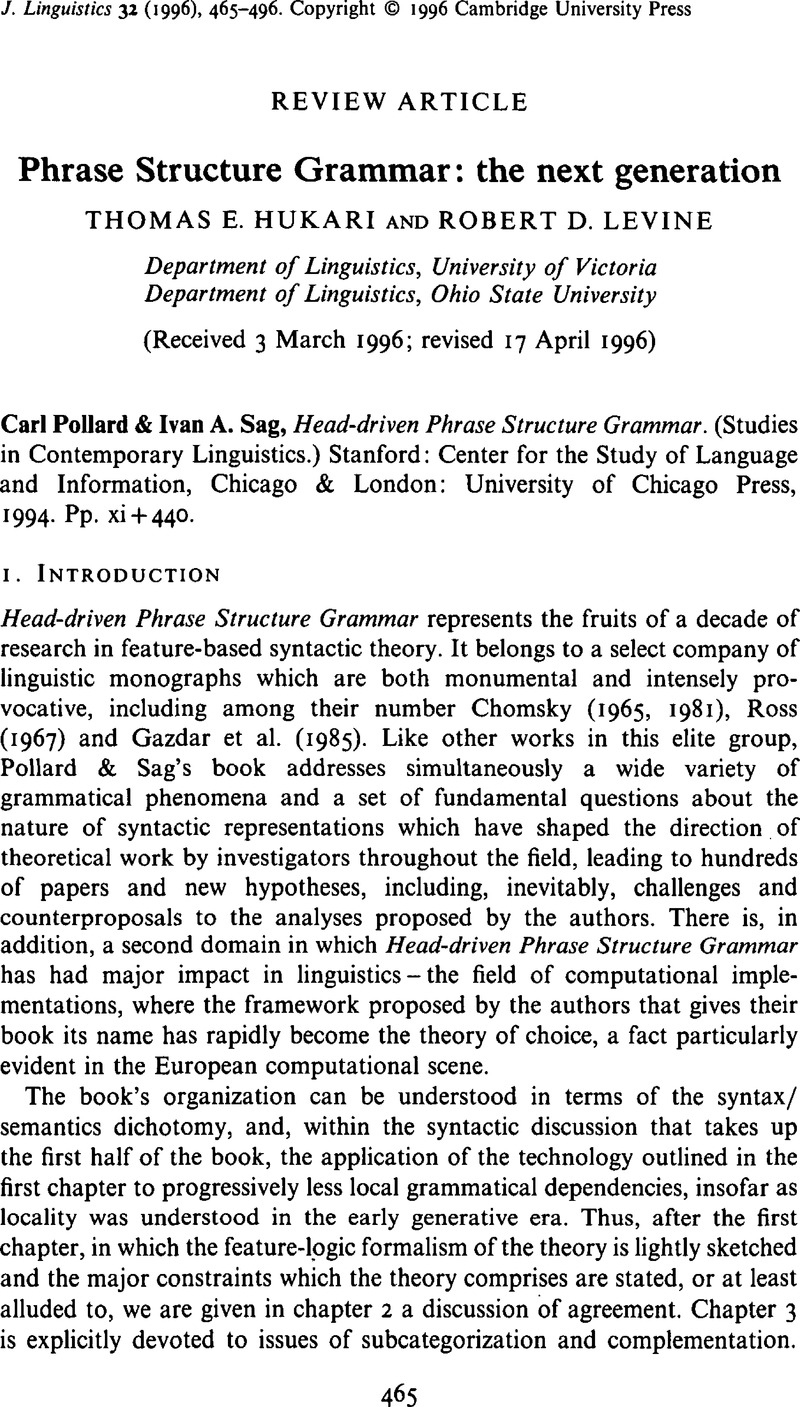Crossref Citations
This article has been cited by the following publications. This list is generated based on data provided by Crossref.
Bouma, Gosse
Malouf, Robert
and
Sag, Ivan A.
2001.
Satisfying Constraints on Extraction andAdjunction.
Natural Language & Linguistic Theory,
Vol. 19,
Issue. 1,
p.
1.
Levine, Robert D
2006.
Encyclopedia of Cognitive Science.
Green, Georgia M.
2011.
Non‐Transformational Syntax.
p.
9.


